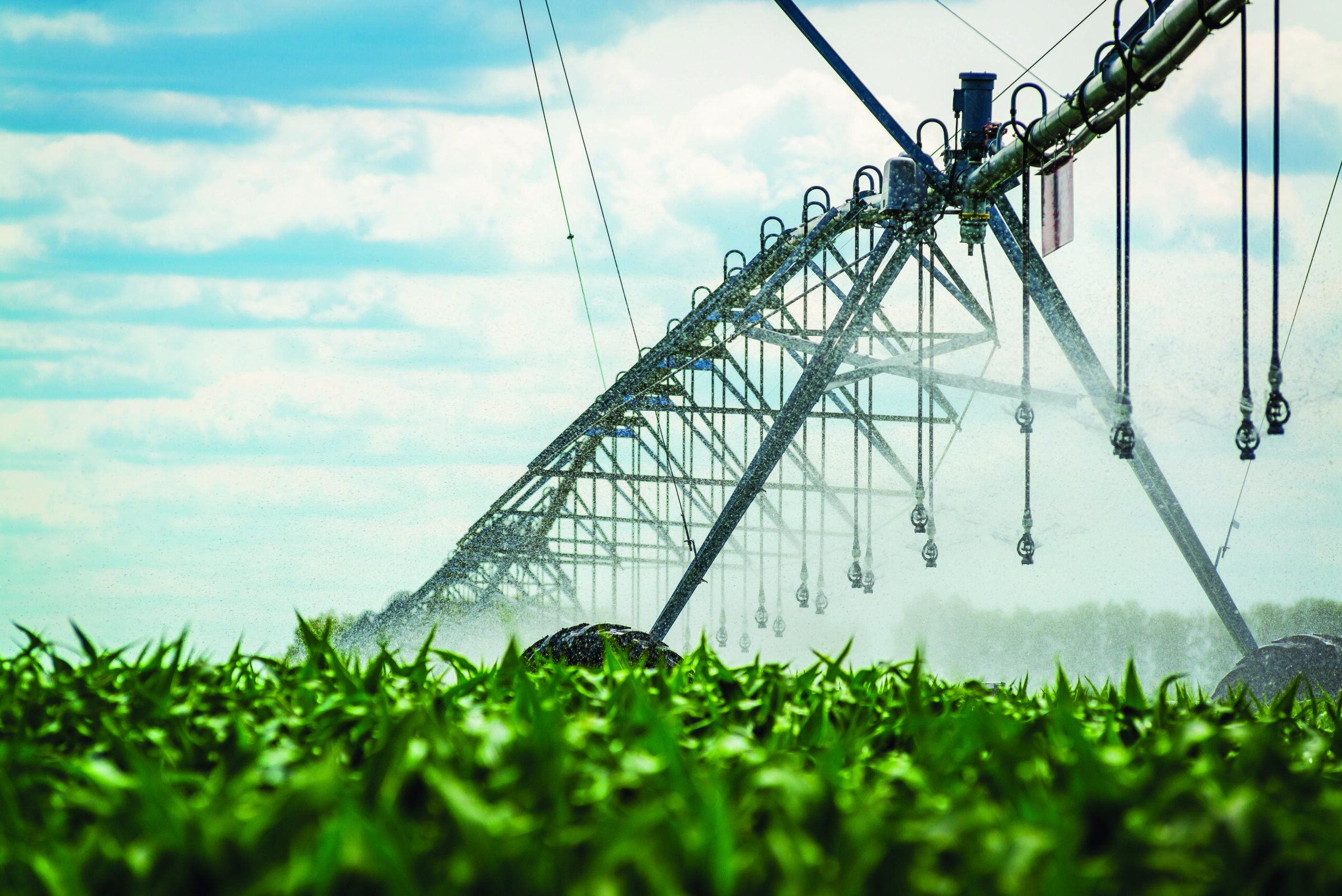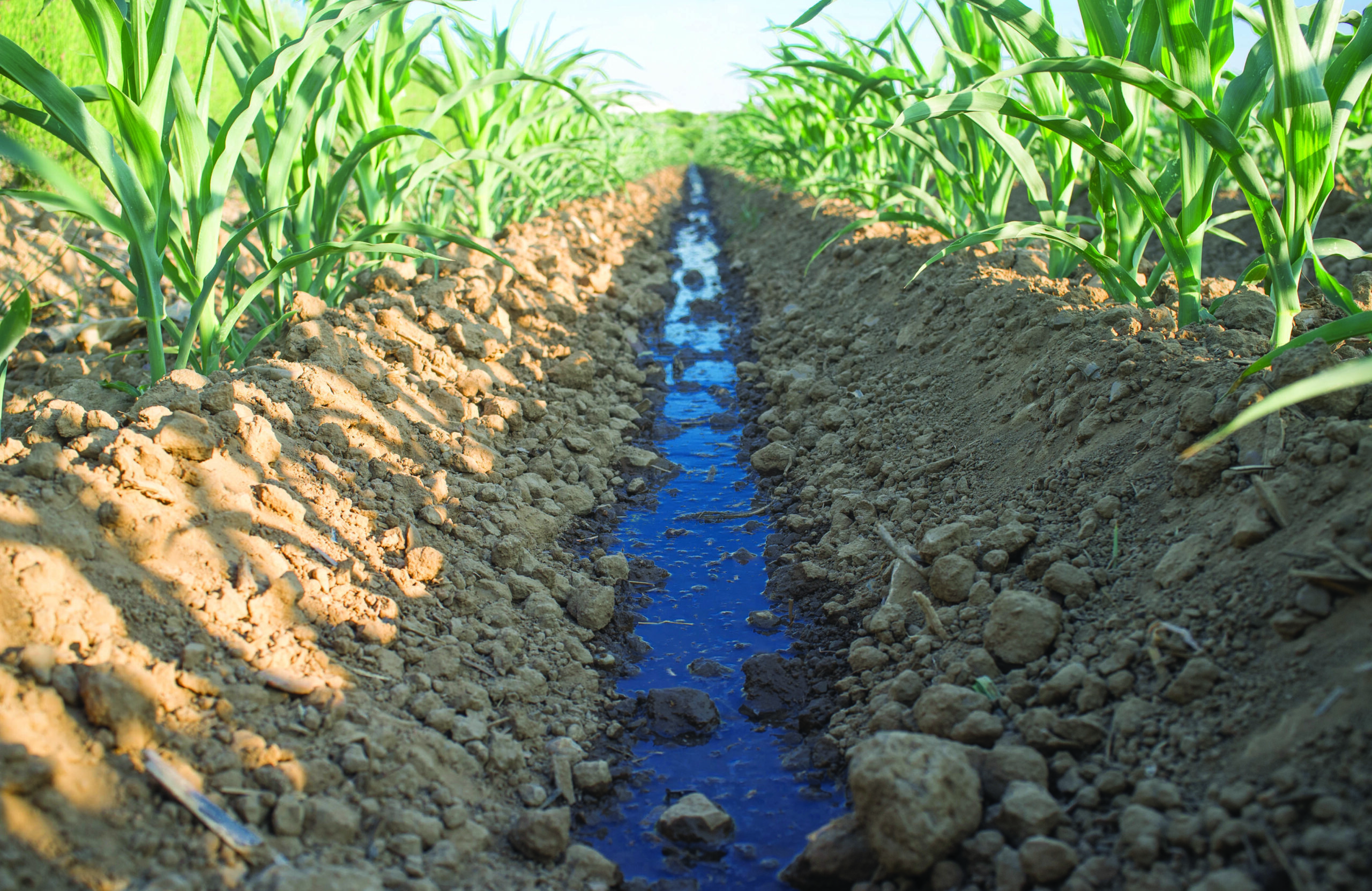Water Resource Management is Vital
By Angela Rogalski
Furrow irrigation dominates in the Mississippi Delta. Dr. Drew Gholson is coordinator for the National Center for Alluvial Aquifer Research at Delta Research and Extension Center in Stoneville. Gholson says that over eighty percent of the Mississippi Delta utilizes furrow irrigation as opposed to pivot irrigation.
“Furrow irrigation meaning you start at the top end of the field and let it go to the bottom end of the field,” says Gholson. “And, there are a lot of reasons for that: we’re relatively flat and we have precision level fields; we have relatively high capacity wells so we can get that water on quickly. So, all of that makes furrow irrigation fairly easy for us in the Mississippi Delta.”


However, Gholson says that furrow irrigation is usually less efficient than sprinkler irrigation. “Even though the majority of our acres are furrow irrigation, it is less efficient. But, there are a lot of tools that we promote from water conservation or irrigation management practices to use to increase water use efficiency. And, that’s an area that we’re covering with State Extension Services; helping growers and farmers with those practices.”
Gholson explains that one of those tools or practices is computerized hole selection. “This is a computer software application which designs and evaluates furrow irrigation systems. It considers the size of the field, length of poly-tubing, and elevation changes along the field crown and tells you what size hole to put in each furrow so that they all water out uniformly. And, that really increases our efficiency and reduces our pump run time by about forty percent. So that’s a big water saving tool, by just getting the right hole size per furrow to get the right flow per furrow.”
Gholson says your county agent can help with that. “We have a program where all the county agents in the Delta have flow meters and elevation kits where they can go get that data for the farmer so that they can have the correct hole sizes.”
Another way that water use efficiency can be obtained is scheduling.
“When to turn on the well; when to irrigate at the right time,” says Gholson. “If farmers can hold off and not irrigate when they don’t really need to, then they can save a lot of water that way as well. And one of the ways to do that is by using soil moisture sensors. You install those into the fields and they tell you how much moisture is actually in the root profile. So, going down thirty or more inches, you can have moisture sensors installed to monitor the moisture below the surface of the fields. And that can help make the decision on when to irrigate.”
Gholson says with these tools, farmers can be good water managers and help to make furrow irrigation as efficient as possible.
“We’re also evaluating new technology in furrow irrigation, such as automation,” he adds. “Where we can control the pump and valve through our computers or our cell phones. Then, we can program when it swaps over and when it turns off. That way we can put in a prescription prior to irrigation. But, we’re only at the testing stage now, trying to see how user-friendly it is, do they open and close like they’re supposed to, and can we save water. And, I can say it looks promising. Farmers can contact their county agents and get more information on all of the efficiency resources out there, such as the full moisture sensor demonstration program we offer.”
